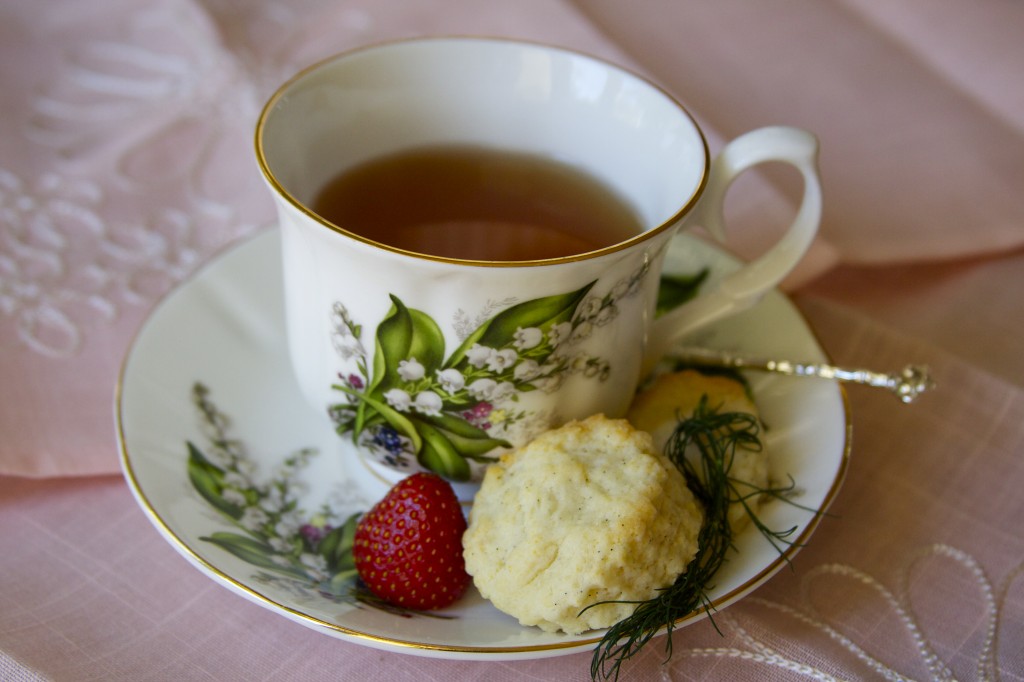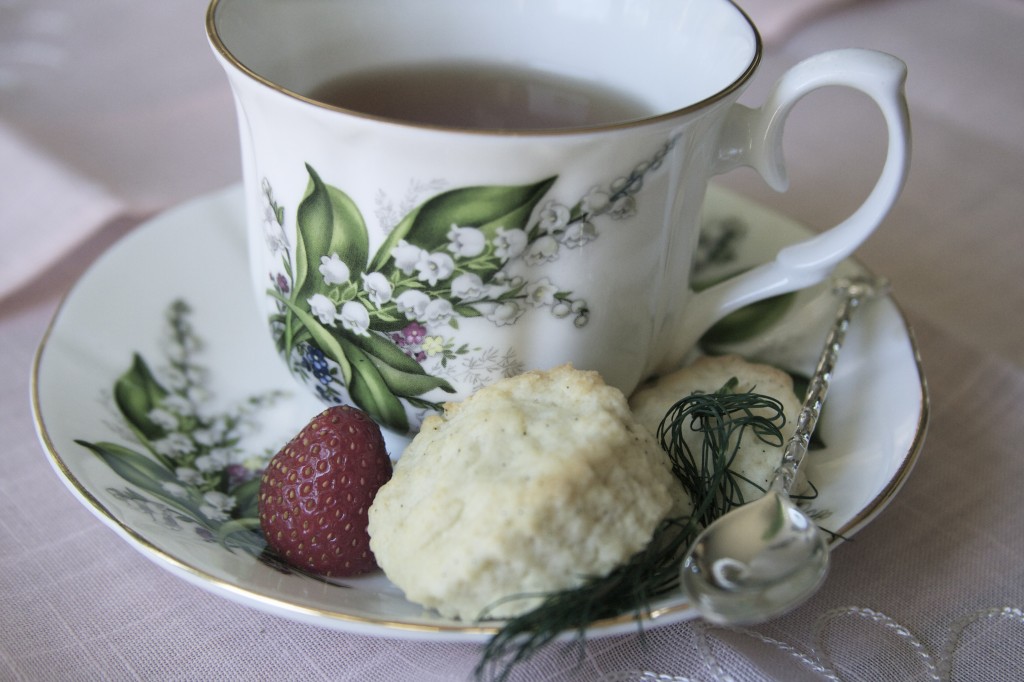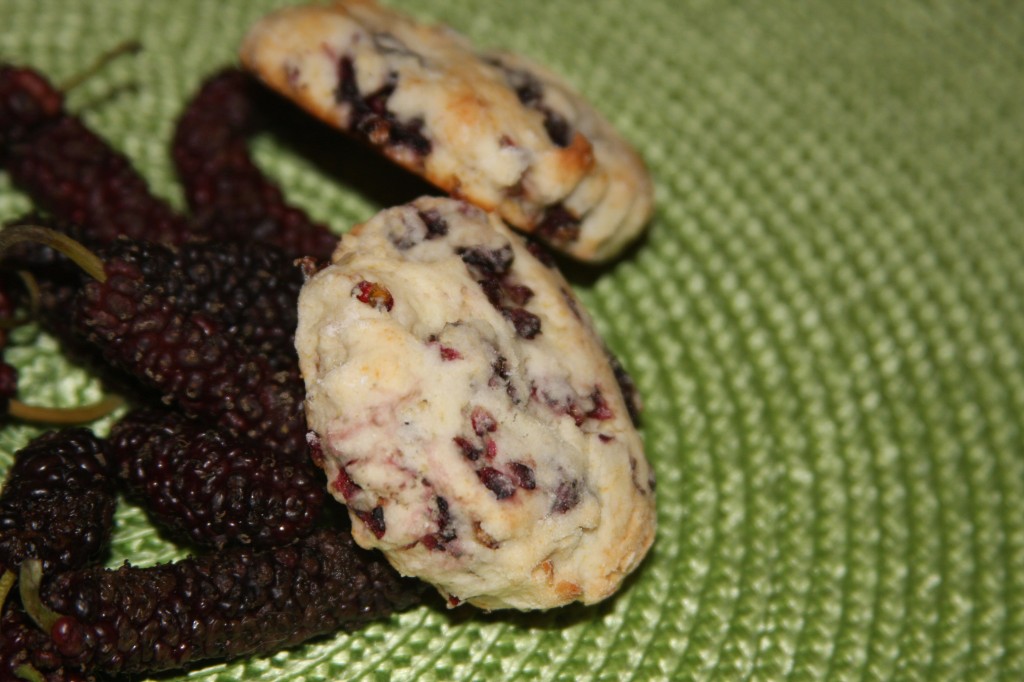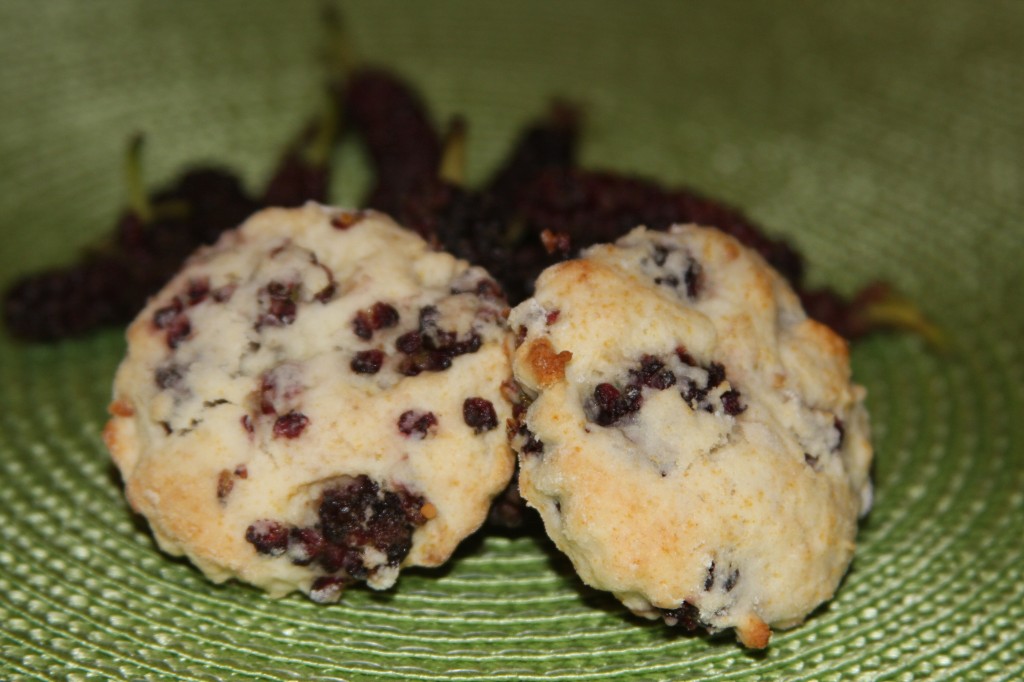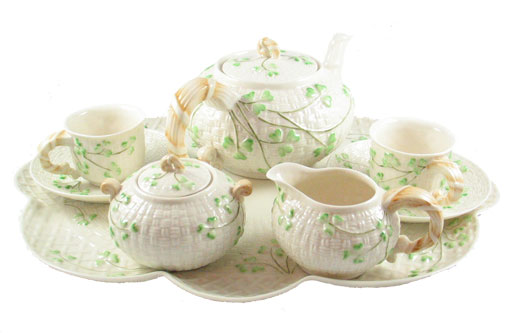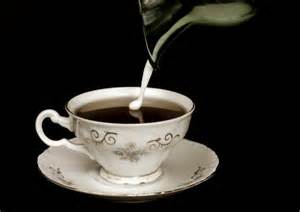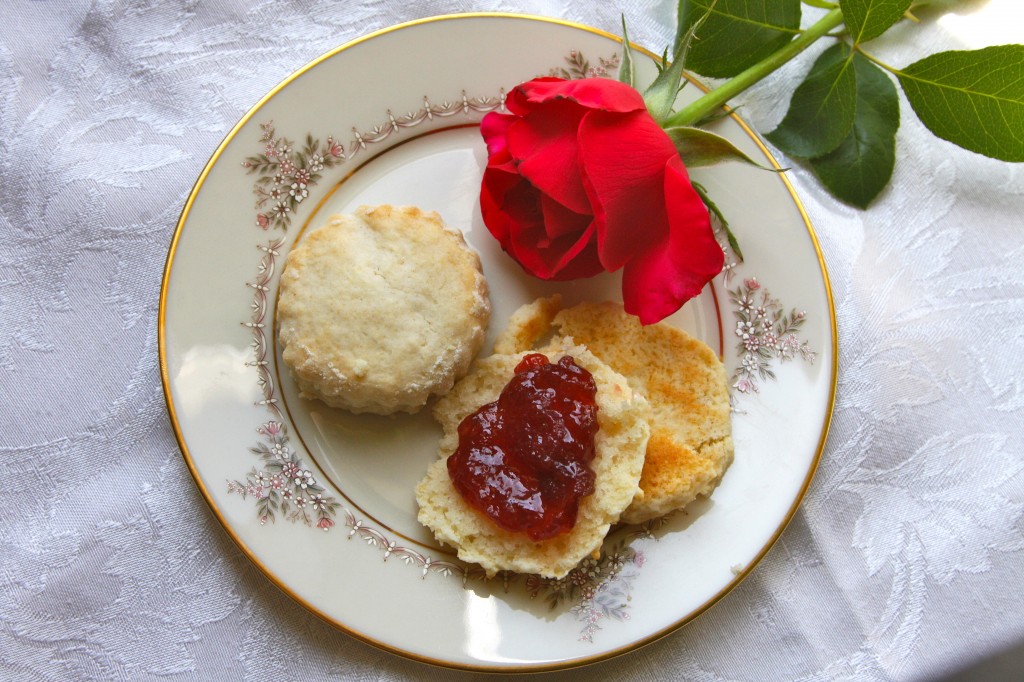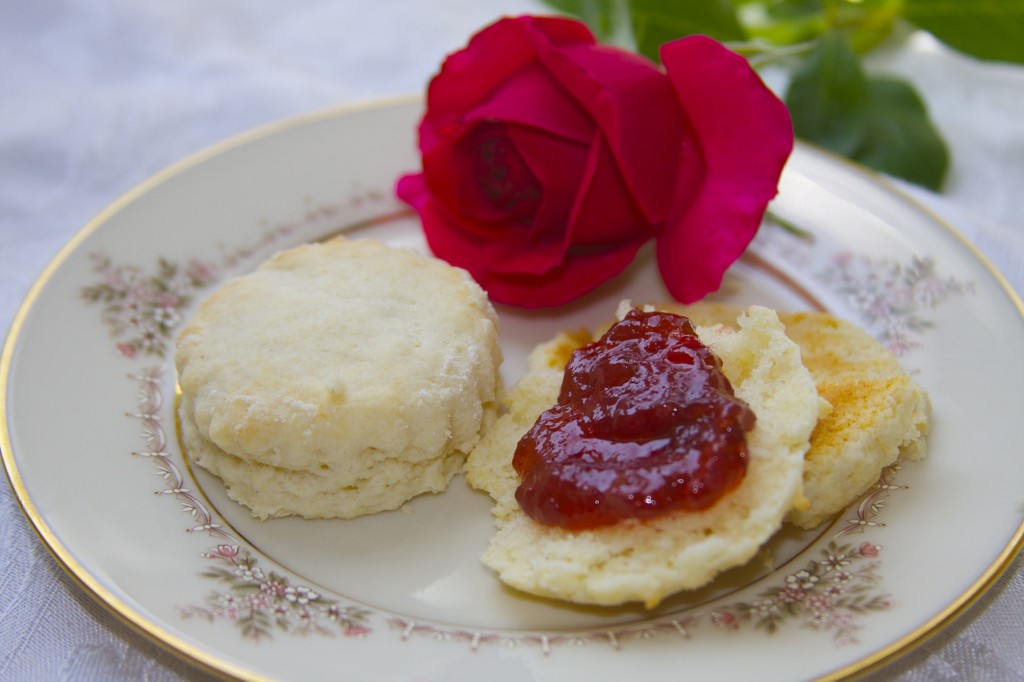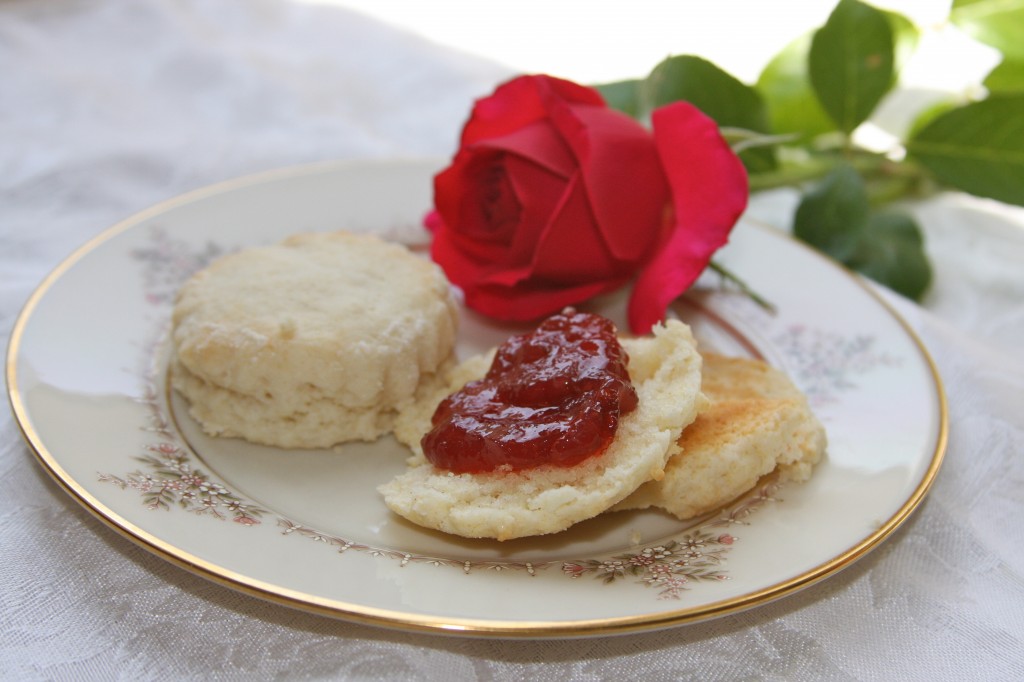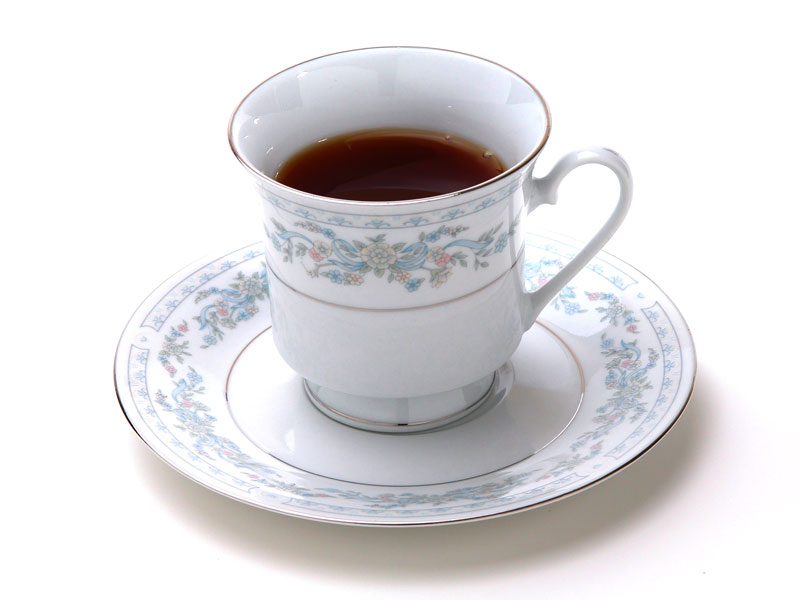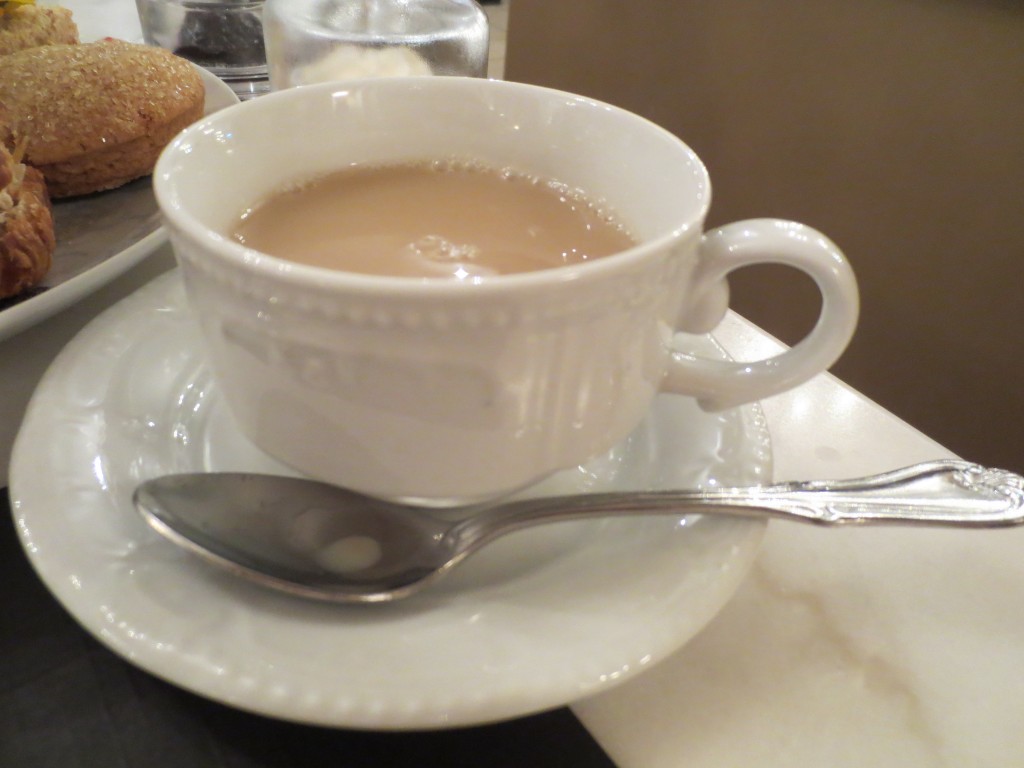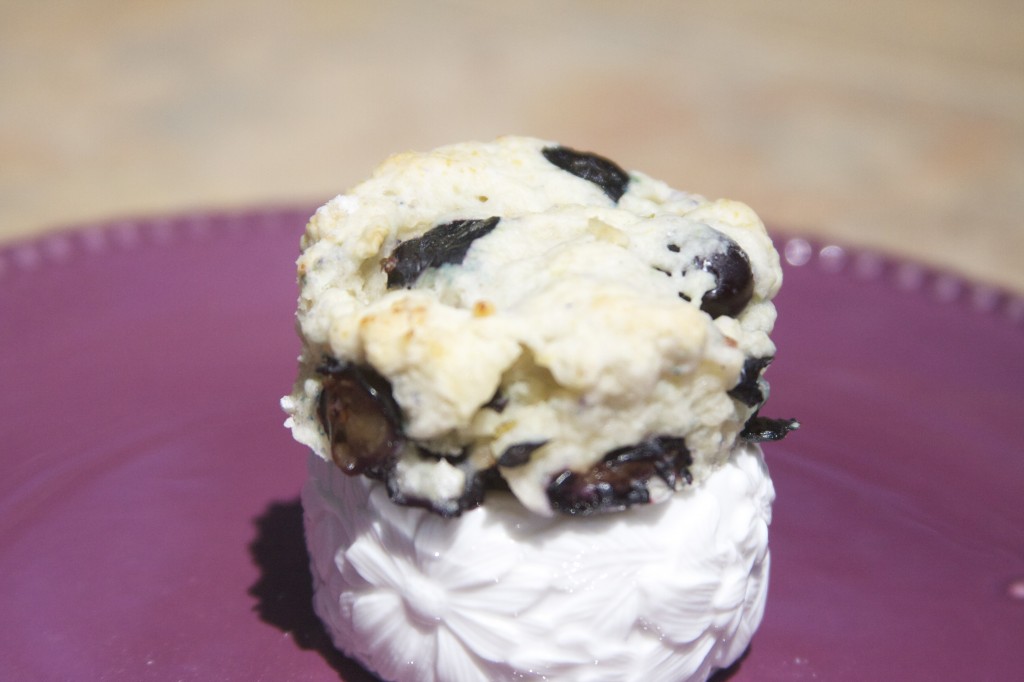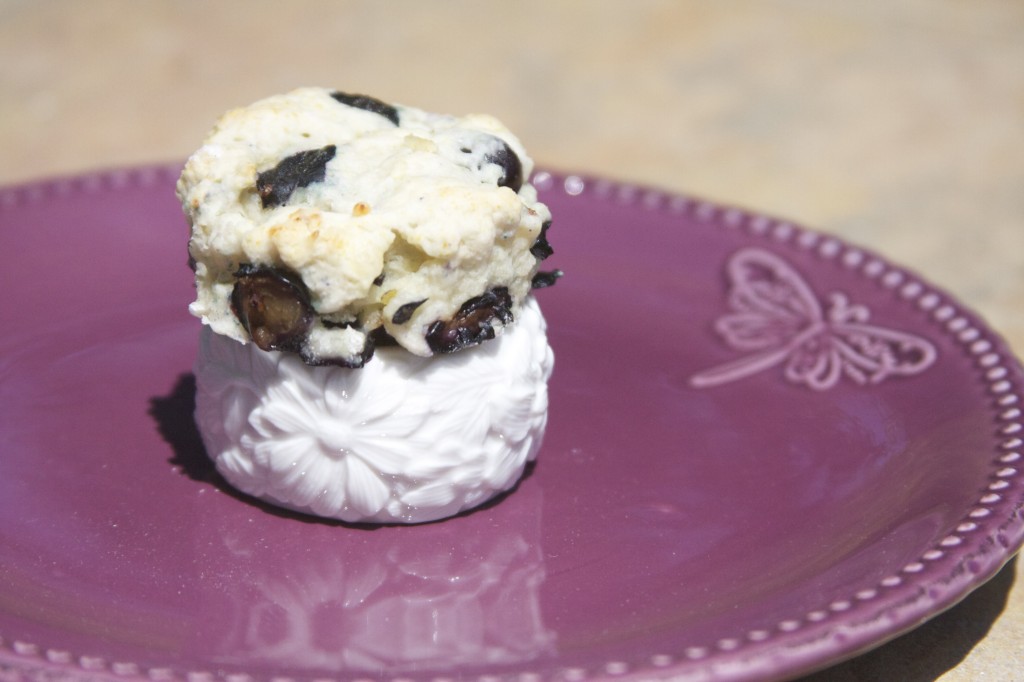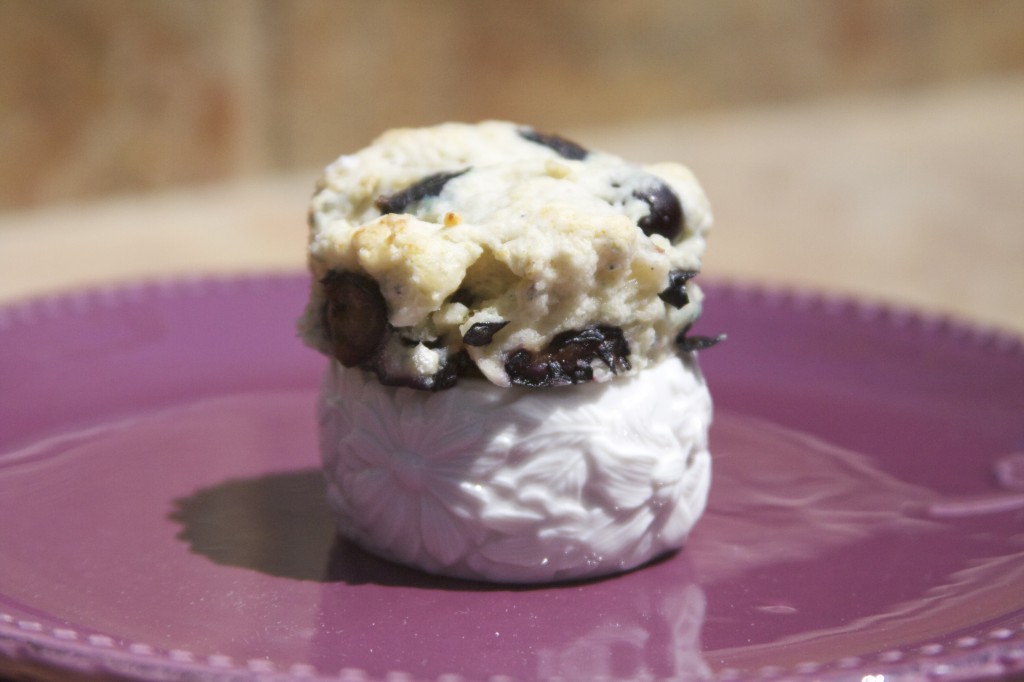I was on vacation! As many tearooms as I have found and intend on visiting all around Los Angeles, it was exciting to have the chance to expand to another coast. And surely with Washington DC being closer to England than is LA, afternoon tea would be a common find.

Teaism Penn Quarter
Not so much.
But I was able to find an Asian tearoom just north of the Mall for a quickie review. Teaism was conveniently located, yet there was the one hiccup of my dad and brother being along for the trip and they were adamant that I was not dragging them along to an afternoon tea. I told them it was for a good cause—you—but they continued to refuse. So due to time constraints, I was only able to pop in for a glass of tea and a scone taste; even from this seemingly meager sampling, though, I think I got the measure of the place.
First Impressions and Service
I had to relook at my map because this store didn’t seem like a tearoom that serves afternoon tea. I mean, there was a takeaway counter and the menu printed above the cashier. Eventually I saw the stairs leading down, so although I doubt there is a formal dining room a la Langham Pasadena, there is probably enough seating there to serve the proper number of courses.
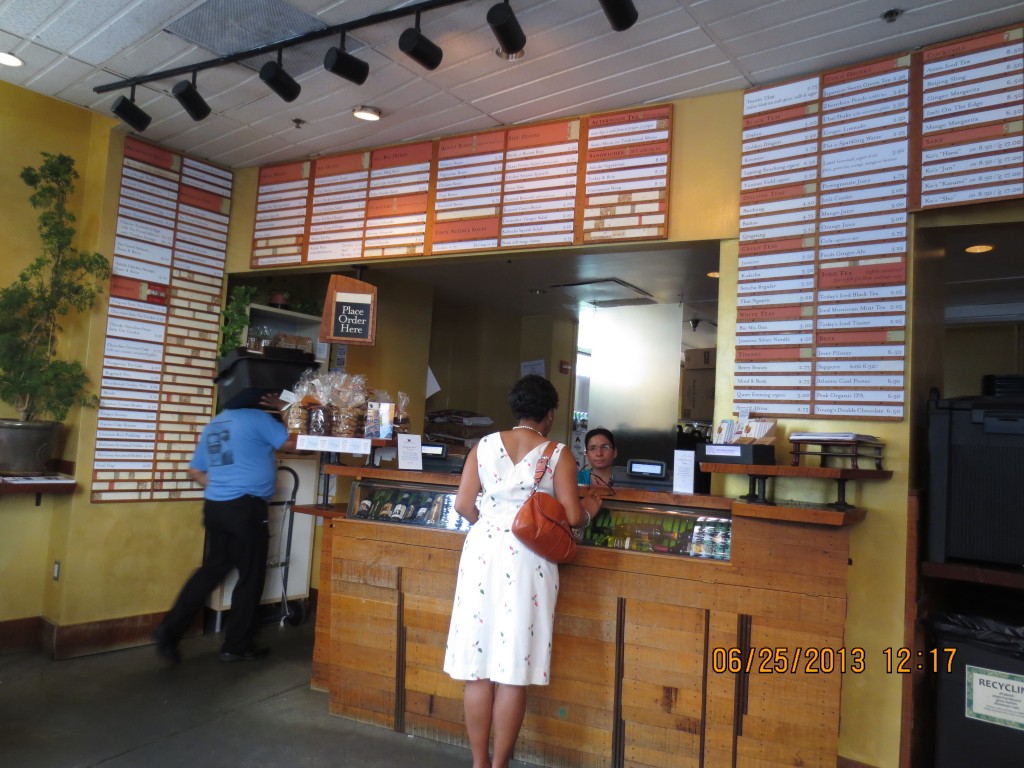
I can see it being a popular lunch spot.
Nothing was what I expected at all. You have to order at a counter and they call out your number when your food is ready. I don’t know if that is how they serve afternoon tea as well, but for a make-our-own cream tea the kitchen rang a bell when our scones were plated. Service is pretty nondescript. I asked a few question; the cashier made adequate answers. There was no warmth to the place at all.
Décor
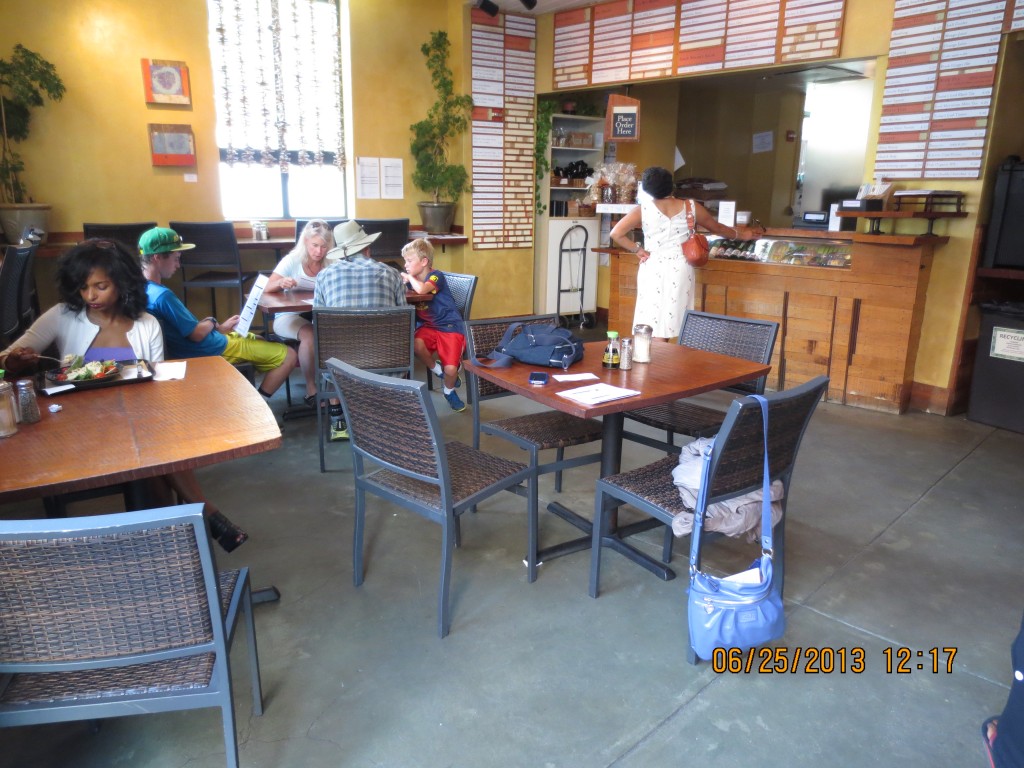
There is a second floor below; maybe it’s more formal?
Everything is painted in nice, cheerful colors of yellows and oranges, pleasant but not too much as to burn your retinas. Bright woods and gray stone complement the design. The main room is laid out just like you would expect in a lunch café: basic tables and chairs spread out with no real rhyme or reason. The menu is in removable slats above the cashier and doesn’t have any descriptions of what you are eating; they have printed menus that are more detailed. Despite being an Asian tearoom, nothing is over-the-top Asian decoration. It just looks like a nice escape from the humidity of DC.
Tea Selection
They have a fair number of teas (and also beer and wine if your interested) in all the major categories. They put more of an emphasis on straight, nonflavored teas but there are some options if you prefer a taste of something other than straight Silver Needle. Everyday they offer unlimited refills of a house chosen black tea, green tea, and tisane. Washington DC was ridiculously humid so Mom and I both went with the Berry Tisane.
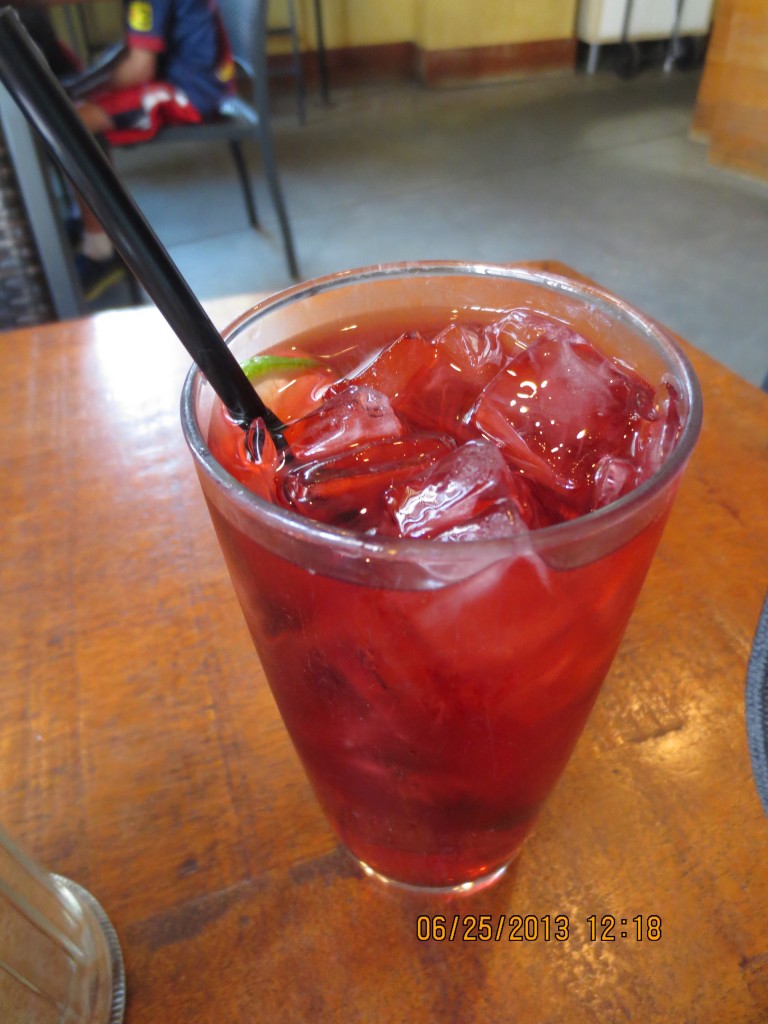
Daily Special: Unlimited Berry Tisane
Lightly sweetened and mildly tart, the berry drink was so refreshing it was perfect. Of course, at that point anything iced might have made our taste buds do a happy dance. We attempted to be objective and both agreed that the dash of lime was very brightening and enjoyable.
Food
They offer an extensive meal menu, very PanAsian cuisine. For afternoon teas served only between 2:30-5:30, there is an Asian menu and a traditional menu. Again due to time constraints we couldn’t partake in a full service, so we stuck with tasting their only two scone flavors: ginger and carrot cake.
That’s right, no plain or cranberry scones here. No clotted cream either, you are served with butter and orange marmalade and honey. The ginger scone was rather bitter, not like the ginger scone from The Scarlet Tea Room, and texturally tasted like the scones had been baked the day before. Stale and crumbly, this scone was left abandoned on our plate after only a few bites. We just discovered that we like ginger scones, so it was quite a disappointment.
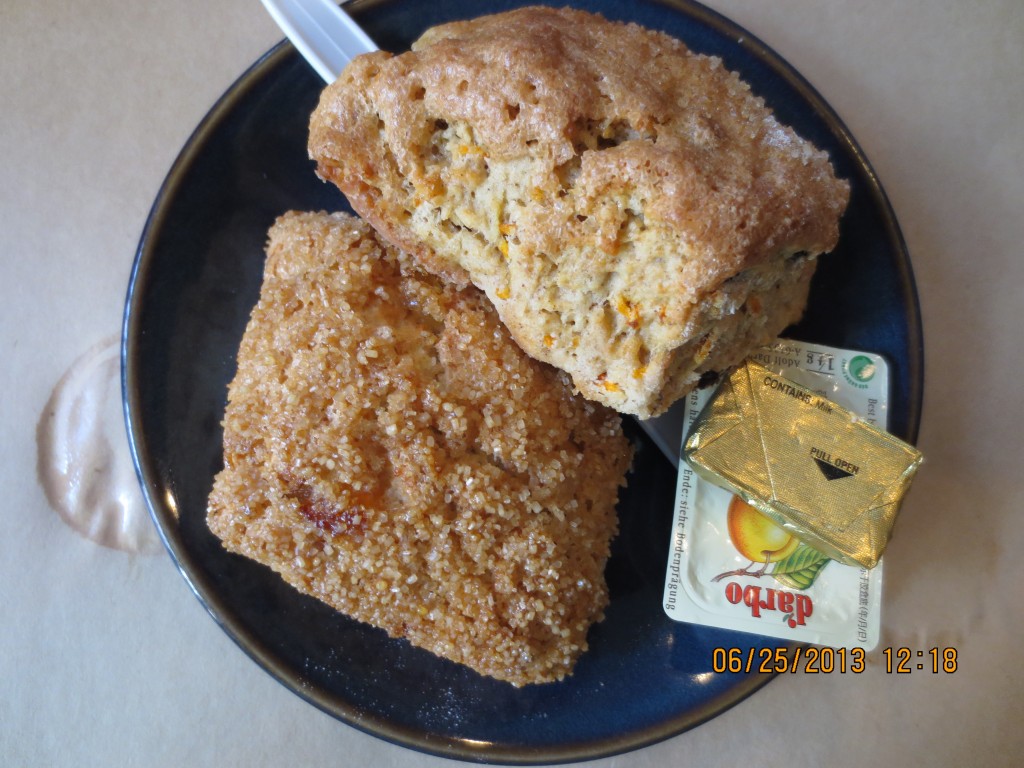
Ginger Scone; Carrot Cake Scone
The carrot cake scone at least tasted fresh and moist. And it did taste like a cross between a carrot cake and a scone. I know, you say duh isn’t that the point? But so many baked goods or candies that are supposed to taste like a different type of baked good or sweet just don’t come close. These did. They weren’t overly sweet, had just enough spice to evoke carrot cake, and there were actual shreds of carrots in them. I think that carrot cake requires cream cheese frosting, so this might have actually gone well with clotted cream (or just give me cream cheese frosting in an IV and I’ll take care of the rest).
It may seem like saying we are glad we didn’t come for a full afternoon tea is a hasty answer, but between the unwelcoming staff, fast-food fast-meal atmosphere, and only one good scone, we doubt that an afternoon tea here would’ve been anything special. But some of their lunch offerings sounded tasty so I’d be willing to try the full service just for the experience.
Visit Teasim at 400 8th St. NW, Washington DC, 20004 (202) 638-6010.
Like this:
Like Loading...
 See? I even have another tea room visited while I was in Laguna Beach, just haven’t has the chance to write it up. But know that I’m hard at work for all of us!
See? I even have another tea room visited while I was in Laguna Beach, just haven’t has the chance to write it up. But know that I’m hard at work for all of us!
